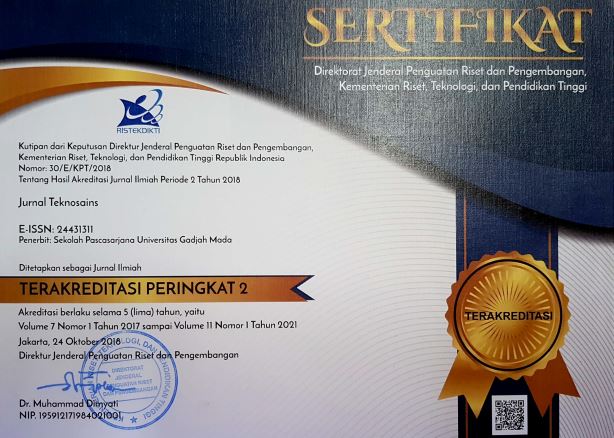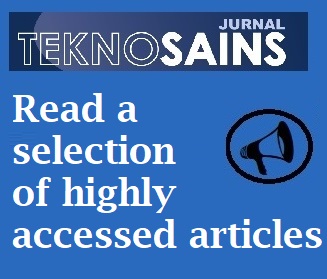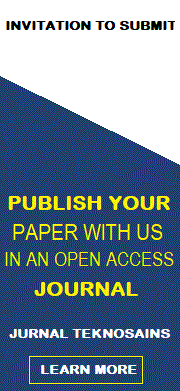Impact of slum upgrading to river water quality in Yogyakarta city, Indonesia
Endar Rohmadi(1*), Masahiko Sekine(2), Bakti Setiawan(3)
(1) Student of Universitas Gadjah Mada
(2) Yamaguchi University, Japan
(3) Universitas Gadjah Mada
(*) Corresponding Author
Abstract
Due to a lack of proper sanitation services, the disposal of residential wastewater from slum areas has become one of the river pollution contributors. In Yogyakarta slums were concentrated along the riverbanks of the Winongo, Code and Gajahwong rivers. Due to slum upgrading, slums have declined from 264.5 ha to 114.72 ha between 2016 and 2020. This research aims to determine the correlation between slum upgrading and river water quality. The data was acquired from the Government of Yogyakarta City, Indonesia, and examined using ten water parameters from 2013 to 2021. Using Pearson Correlation Coefficient and Spearman Rank, it was found that population density positively correlated with Total Coliform and Fecal Coliform (p<0.05). It was also seen that the slum ratio showed a positive correlation with BOD, COD, TSS, pH, and NH3-N (p<0.05). The number of WWTP had a positive correlation with PO4-P (p= 0.037), whereas the number of connected houses to WWTP reported a positive correlation with P04-P (p=0.028). In addition, a significant decrease in BOD, COD, NH3-N, pH, and TSS were found using the Paired t-test and the Wilcoxon Signed-Rank test. (p<0.05). Slum upgrading notably reduced organic pollutants and suspended solids. However, the performance of WWTP did not perform a maximal contribution to reducing PO4-P and Coliform; therefore, it is necessary to improve the performance. This study might be used to enhance the river and urban management in Yogyakarta City.
Keywords
Full Text:
PDFReferences
[1] A. D. Bank, ASIAN DEVELOPMENT BANK INDONESIA Country Water assessment Indonesia Country Water assessment. 2016.
[2] M. Kumar, M. Sharif, and S. Ahmed, “Impact of urbanization on the river Yamuna basin,” Int. J. River Basin Manag., 2020, doi: 10.1080/15715124.2019.1613412.
[3] K. M. Vigil, Clean Water: An Introduction to Water Quality and Water Pollution, Second Edi. Corvallis: Oregon State University Press, 1996.
[4] A. Müller, H. Österlund, J. Marsalek, and M. Viklander, “The pollution conveyed by urban runoff: A review of sources,” Science of the Total Environment. 2020, doi: 10.1016/j.scitotenv.2019.136125.
[5] B. Wang, “Agricultural economy loss in Yangtze River basin in China caused by water-environment pollution,” Nat. Environ. Pollut. Technol., 2016.
[6] A. Al-Omari, I. Farhan, T. Kandakji, and F. Jibril, “Zarqa River pollution: impact on its quality,” Environmental Monitoring and Assessment. 2019, doi: 10.1007/s10661-019-7283-9.
[7] B. K. Mishra, R. K. Regmi, Y. Masago, K. Fukushi, P. Kumar, and C. Saraswat, “Assessment of Bagmati river pollution in Kathmandu Valley: Scenario-based modeling and analysis for sustainable urban development,” Sustain. Water Qual. Ecol., 2017, doi: 10.1016/j.swaqe.2017.06.001.
[8] R. Afroz, M. M. Masud, R. Akhtar, and J. B. Duasa, “Water pollution: Challenges and future direction for water resource management policies in malaysia,” Environ. Urban. ASIA, 2014, doi: 10.1177/0975425314521544.
[9] D. Suwarno, A. Löhr, C. Kroeze, and B. Widianarko, “Fast increases in urban sewage inputs to rivers of Indonesia,” Environ. Dev. Sustain., 2014, doi: 10.1007/s10668-014-9514-0.
[10] E. Novita, H. A. Pradana, B. H. Purnomo, and A. I. Puspitasari, “River water quality assessment in East Java, Indonesia,” J. Water L. Dev., 2020, doi: 10.24425/jwld.2020.135040.
[11] L. P. Defi, I. Kusumayanti, W. M. Fatimah, P. W. Sarli, and P. Soewondo, “THE RISE OF RAINBOW VILLAGE: OPTIMIZING AESTHETICAL PROGRAM TO ACCELERATE SANITATION ACCESS,” Int. J. GEOMATE, 2022, doi: 10.21660/2022.90.7569.
[12] J. Abbott, “An analysis of informal settlement upgrading and critique of existing methodological approaches,” Habitat Int., 2002, doi: 10.1016/S0197-3975(01)00049-2.
[13] M. V. Michiani and J. Asano, “Physical upgrading plan for slum riverside settlement in traditional area: A case study in Kuin Utara, Banjarmasin, Indonesia,” Front. Archit. Res., 2019, doi: 10.1016/j.foar.2019.03.005.
[14] E. F. Rini, P. Rahayu, and G. K. Sinniah, “Sustainable river management: Land use, building coverage, and infrastructure typology of the riverbanks,” 2020, doi: 10.1088/1755-1315/447/1/012052.
[15] D. Marwasta and T. D. K. Rahayu, “Spatial distribution of slums and its association with disaster vulnerability in Yogyakarta City,” 2020, doi: 10.1051/e3sconf/202020003011.
[16] S. W. Lee, S. J. Hwang, S. B. Lee, H. S. Hwang, and H. C. Sung, “Landscape ecological approach to the relationships of land use patterns in watersheds to water quality characteristics,” Landsc. Urban Plan., 2009, doi: 10.1016/j.landurbplan.2009.02.008.
[17] K. Asnake, H. Worku, and M. Argaw, “Assessing the impact of watershed land use on Kebena river water quality in Addis Ababa, Ethiopia,” Environ. Syst. Res., 2021, doi: 10.1186/s40068-020-00208-y.
[18] S. C. Azhar, “Land Use and River Water Quality Relationships in the Muda River Basin,” Malaysia. Educ. J. Sci. Math. Technol., 2021.
[19] Z. Luo, Q. Shao, Q. Zuo, and Y. Cui, “Impact of land use and urbanization on river water quality and ecology in a dam dominated basin,” J. Hydrol., 2020, doi: 10.1016/j.jhydrol.2020.124655.
[20] L. Wu et al., “Impacts of land use change on river systems for a river network plain,” Water (Switzerland), 2018, doi: 10.3390/w10050609.
[21] S. P. Saraswati, M. V. Ardion, Y. H. Widodo, and S. Hadisusanto, “Water Quality Index Performance for River Pollution Control Based on Better Ecological Point of View (A Case Study in Code, Winongo, Gadjah Wong Streams),” J. Civ. Eng. Forum, 2019, doi: 10.22146/jcef.41165.
[22] Y. Wijayanti, S. Harliantoro, O. Setyandito, and K. Budihardjo, “Water quality index for river water assessment of Serang River Basin and Kulon Progo Regency, Yogyakarta,” 2021, doi: 10.1088/1755-1315/729/1/012031.
[23] K. Y. DLH, “Dokumen Informasi Kinerja Pengelolaan Lingkungan Hidup Daerah Kota Yogyakarta Tahun 2019,” 2019.
[24] K. Y. DLH, “Laporan Kinerja Instansi Pemerintah Dinas Lingkungan Hidup 2021,” 2021.
[25] R. Mahabir, A. Crooks, A. Croitoru, and P. Agouris, “The study of slums as social and physical constructs: Challenges and emerging research opportunities,” Reg. Stud. Reg. Sci., 2016, doi: 10.1080/21681376.2016.1229130.
[26] A. Patel, N. Koizumi, and A. Crooks, “Measuring slum severity in Mumbai and Kolkata: A household-based approach,” Habitat Int., 2014, doi: 10.1016/j.habitatint.2013.09.002.
[27] K. Y. BPS, “Badan Pusat Statistik Kota Yogyakarta,” 2022.
[28] F. Bostanmaneshrad, S. Partani, R. Noori, H. P. Nachtnebel, R. Berndtsson, and J. F. Adamowski, “Relationship between water quality and macro-scale parameters (land use, erosion, geology, and population density) in the Siminehrood River Basin,” Sci. Total Environ., 2018, doi: 10.1016/j.scitotenv.2018.05.244.
[29] S. M. Kerstens, I. Leusbrock, and G. Zeeman, “Feasibility analysis of wastewater and solid waste systems for application in Indonesia,” Sci. Total Environ., 2015, doi: 10.1016/j.scitotenv.2015.05.077.
[30] S. Sudarmadji, “Changes of Groundwater Quality in the Sorrounding Pollution Sources Due to Earthquake Dissaster,” Forum Geogr., 2016, doi: 10.23917/forgeo.v20i2.1813.
[31] E. Sriyono, Sardi, and N. C. Kresnanto, “Assessment of the quality of well water in the spatial terraces of river code in Yogyakarta Indonesia,” 2019, doi: 10.1088/1757-899X/650/1/012057.
[32] Indrastuti, S. Kazama, and S. Takizawa, “Evaluation of microbial contamination of groundwater under different topographic conditions and household water treatment systems in special region of Yogyakarta province, Indonesia,” Water (Switzerland), 2021, doi: 10.3390/w13121673.
[33] A. Yulistyorini et al., “Performance of anaerobic baffled reactor for decentralized waste water treatment in urban Malang, Indonesia,” Processes, 2019, doi: 10.3390/pr7040184.
[34] Muryanto, Suntoro, T. Gunawan, P. Setyono, A. Nurkholis, and N. F. Wijayanti, “Distribution of nitrate household waste and groundwater flow direction around Code River, Yogyakarta, Indonesia,” Indones. J. Geogr., 2019, doi: 10.22146/ijg.43420.
[35] M. H. Ward et al., “Workgroup report: Drinking-water nitrate and health - Recent findings and research needs,” Environ. Health Perspect., 2005, doi: 10.1289/ehp.8043.
[36] M. H. Ward et al., “Drinking water nitrate and human health: An updated review,” International Journal of Environmental Research and Public Health. 2018, doi: 10.3390/ijerph15071557.
[37] Q. Zhang, H. Qian, P. Xu, W. Li, W. Feng, and R. Liu, “Effect of hydrogeological conditions on groundwater nitrate pollution and human health risk assessment of nitrate in Jiaokou Irrigation District,” Journal of Cleaner Production, 2021, doi: 10.1016/j.jclepro.2021.126783.
[38] D. Suwarno, A. Löhr, C. Kroeze, and B. Widianarko, “Past and future trends in nutrient export by 19 rivers to the coastal waters of Indonesia,” Journal of Integrative Environmental Sciences., 2013, doi: 10.1080/1943815X.2013.772902.
Article Metrics
Refbacks
- There are currently no refbacks.
Copyright (c) 2022 Endar Rohmadi et al.

This work is licensed under a Creative Commons Attribution-ShareAlike 4.0 International License.
Copyright © 2024 Jurnal Teknosains Submit an Article Tracking Your Submission
Editorial Policies Publishing System Copyright Notice Site Map Journal History Visitor Statistics Abstracting & Indexing









